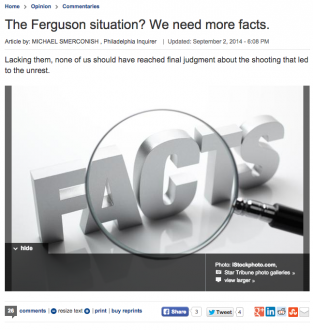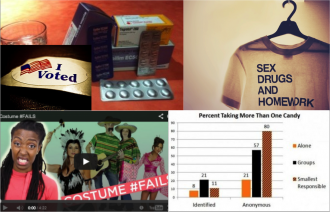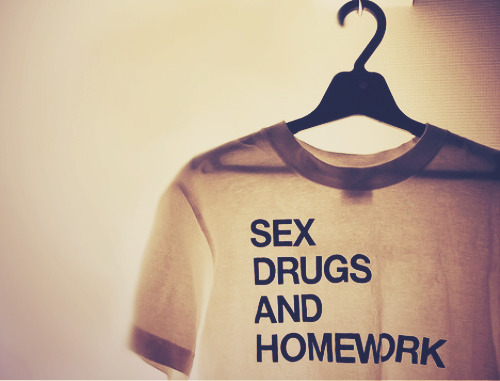
This fall I’ve been working on the address I’m supposed to give as President of the Midwest Sociological Society in Chicago this coming March (23-26). Playing off of our program theme of a year ago, it is tentatively titled: “Sociology and its Publics: The Next Generation.” Among the themes I’ve been reading about and trying to think through are the social conditions and institutional infrastructures of public engagement—and very high on that list are all the new social media forms that began to appear just as the thing we call “public sociology” was beginning to be named and championed by Michael Buroway.
If you are interested in such topics, Kieran Healy has a great piece on social media and public sociology that you should take a look at. It is based on a talk he gave recently at UC–Berkeley.
Almost as if by ESP, Joel Best of the University of Delaware sent me this little reflection he wrote about the evolution of media coverage of his research on fear and Halloween over the years. It seems both timely and appropriate to share (with his permission).
“Experiencing the Death of Print.”
In 1985, I published my research on fears of Halloween sadism, first in a sociology journal and then in Psychology Today magazine. My principal finding—that I could not find any reports of children being killed or seriously injured by contaminated treats received while trick-or-treating—struck the press as newsworthy, and I wound up giving a couple dozen interviews that year.
That was the beginning of a seasonal job. For 31 years, I have fielded late-October calls from reporters at all sorts of media—a few hundred in all, I suppose. The great majority came from newspapers. Typically, a reporter would be assigned to write a story about Halloween safety and, not really knowing how to proceed, she’d often check LEXIS-NEXIS to see what other reporters wrote on the topic the previous year, find me quoted, and then give me a call.
This year had a normal amount of traffic—eight requests for interviews, which covered the usual topics. But there was one difference: I spoke to only one newspaper reporter. All the other interviews were for podcasts, websites, or other Internet-based media.
We hear a lot about the death of print: newspapers and magazines have declining circulations. Young people, in particular, prefer to get their news through electronic means. As a result, newspapers are publishing fewer pages of news and employing fewer reporters to write stories. The inevitable result is fewer feature stories about Halloween safety, and therefore fewer print journalists contacting me. Print journalism may not be dead, but it doesn’t seem that healthy. Once again, Mills has been proven right: the sociological imagination can link my personal experiences to larger public issues.



